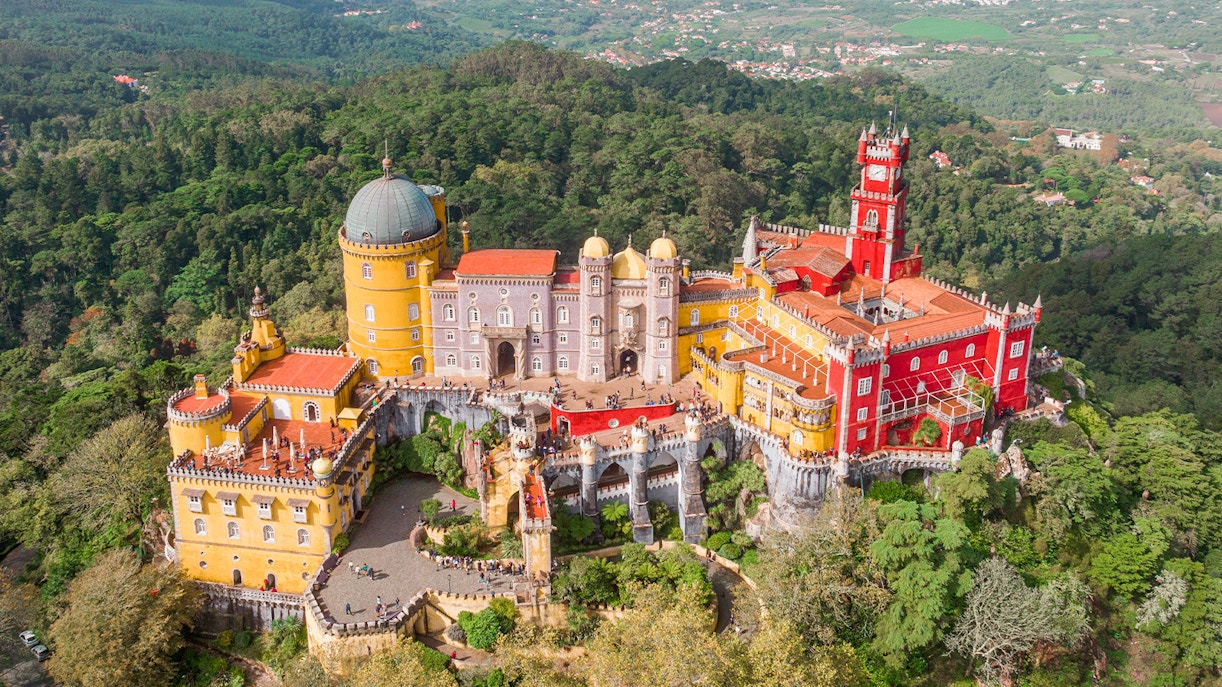Pena Palace is a consequence of several decisions taken by individuals in power. Its history begins well before its construction. A chapel dedicated to Nossa Senhora da Pena stood at Pena Palace's place in the 12th century. When King Manuel I came to power, he brought it down to create a monastery called the Royal Monastery of Nossa Senhora da Pena.
History of Pena Palace

12th century

18th century
A devastating earthquake ripped Lisbon in 1755. It caused widespread destruction, leaving the Royal Monastery of Nossa Senhora da Pena in ruins. Hardly anything was left of the monastery, but it stayed functional throughout the 18th century and the start of the 18th century.

19th century
Pena Palace got its current form in the 19th century. The Royal Monastery of Nossa Senhora da Pena was abandoned in 1834 after the fall of the religious orders in Portugal. Four years later, King D. Fernando II of Portugal, who fell in love with Sintra, ordered the construction of Pena Palace on the ruins of the old monastery. His family used the palace and its beautiful park as a summer residence for over a decade.

20th century
Pena Palace’s reputation was enhanced in the 20th century. It was classified as a National Monument and the most important centre of the Cultural Landscape of Sintra in 1910. The palace earned its UNESCO World Heritage Site status in 1995.



